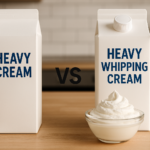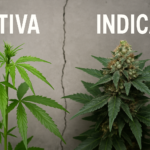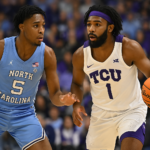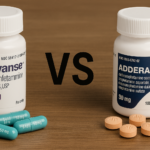Hermit crabs may be small, but their dietary needs are surprisingly complex. If you’ve ever wondered what hermit crab food actually involves, you’re not alone. Feeding these fascinating creatures isn’t just about sprinkling a few pellets into their tank — it’s about providing a variety of safe, nutritious options that mimic what they would eat in the wild. A balanced diet directly impacts their health, growth, and even the strength of the shells they depend on.
In this guide, we’ll explore everything you need to know about hermit crab food — from the basics of their natural diet to essential nutrients, safe and unsafe foods, feeding practices, and how to create a balanced menu at home. Whether you’re a new hermit crab owner or simply looking to improve your pet’s diet, this article will give you the knowledge you need to keep your crabs happy, healthy, and active.
Understanding Hermit Crab Food Basics
Hermit crabs are opportunistic eaters. In the wild, they scavenge along beaches, forests, and tidal pools, searching for anything edible. Their natural diet often includes decaying plants, small bits of fish, fruit scraps, seaweed, and even pieces of wood. This wide variety ensures they receive all the nutrients they need to survive.
In captivity, however, their options are limited to what you provide. This is why a varied diet becomes so important. Relying on a single type of hermit crab food, such as pellets alone, doesn’t give them the balance they need. Instead, offering different foods that reflect their natural habits helps maintain their health and supports their active, curious nature.
Essential Nutrients Hermit Crabs Need
Just like humans, hermit crabs require a mix of nutrients to thrive. Understanding these basics will help you choose the right foods and avoid health problems.
Proteins for growth and strength
Protein is a must for hermit crabs. It supports muscle development, keeps them active, and helps during molting, when they shed their exoskeleton and grow a new one. Without enough protein, hermit crabs may become weak or sluggish.
Calcium for shell health
Calcium is another critical nutrient because it strengthens the exoskeleton. Since hermit crabs rely on shells for protection, a lack of calcium can make them vulnerable. Crushed oyster shells, cuttlebone, or even natural sources like eggshells provide excellent calcium boosts.
Fruits and vegetables for balance
Fresh fruits and vegetables provide vitamins, minerals, and fiber. These not only keep hermit crabs nourished but also add variety and enrichment to their meals. Think of them as colorful extras that make the diet more complete.
Safe Food Options for Hermit Crabs
When it comes to safe hermit crab food, variety is key. Fresh and natural foods often work best. Fruits like apples, bananas, mangoes, and berries are popular choices. Vegetables such as spinach, kale, carrots, and zucchini are also safe and healthy.
Protein can come from cooked chicken, fish, shrimp, or even dried mealworms. Many crab owners also provide nuts and seeds in small amounts, which add healthy fats.
Store-bought food can be convenient, but not all options are equal. If you choose commercial hermit crab food, read labels carefully. Avoid products with artificial colors, preservatives, or high salt content. The best choices are natural blends with dried seaweed, grains, and protein sources.
Foods to Avoid for Hermit Crabs
Not everything in your kitchen is safe for hermit crabs. Some foods can be toxic, while others simply don’t provide any nutritional value.
Processed foods, especially those with salt, sugar, or artificial additives, should be avoided. Onions, garlic, and citrus fruits are also unsafe. Chocolate and dairy products are harmful too. Even though hermit crabs are scavengers, their digestive systems are sensitive, and exposure to the wrong foods can be dangerous.
Another common mistake is feeding hermit crabs only one type of food for long periods. Just like people wouldn’t thrive on a single meal every day, hermit crabs need variety to stay balanced.
Feeding Tips and Best Practices
Feeding hermit crabs isn’t difficult once you know the basics, but there are some best practices to keep in mind.
Hermit crabs should have access to food every day. They often eat at night, so placing fresh food in the evening works well. The portion size doesn’t need to be large; offering small amounts of different foods is better than one big serving. This prevents waste and keeps their diet balanced.
Presentation matters, too. Shallow dishes make it easier for hermit crabs to access food, and removing leftovers the next day keeps the habitat clean. Alongside food, fresh and saltwater should always be available. Hermit crabs use both types of water for drinking and regulating their shells.
Creating a Balanced Hermit Crab Diet at Home
Designing a hermit crab’s diet at home can be both simple and rewarding. A balanced meal might include a small piece of fresh fruit, a leafy green, a protein source like shrimp, and a sprinkle of crushed eggshell for calcium. Rotating options daily helps ensure they get all the nutrients they need.
Mixing things up also prevents boredom. Hermit crabs are curious eaters, and offering new foods gives them a chance to explore and stay active. Some owners even create homemade “crab mixes” using dried seaweed, nuts, and grains. As long as the ingredients are safe, there’s room to get creative.
Conclusion
Feeding hermit crabs may seem simple at first, but providing the right hermit crab food is one of the most important parts of keeping them healthy. A balanced diet rich in protein, calcium, fruits, and vegetables ensures they grow strong, stay active, and enjoy long, happy lives. Avoiding harmful foods, offering fresh and varied meals, and supporting their natural habits will make all the difference.
By focusing on safe, nutritious, and natural hermit crab food, you’ll not only meet their dietary needs but also enrich their daily lives. With a little care and variety, your hermit crabs will thrive in their habitat, just as they would in the wild.
My name is Mustafa, and I have been blogging for over 5 years. I am passionate about sharing complete, accurate, and helpful information with my readers. Along with managing content on The Matcha Read, I also contribute blog posts to premium websites. My goal is to provide valuable insights in a clear and easy-to-understand way, so every reader walks away with useful knowledge.










